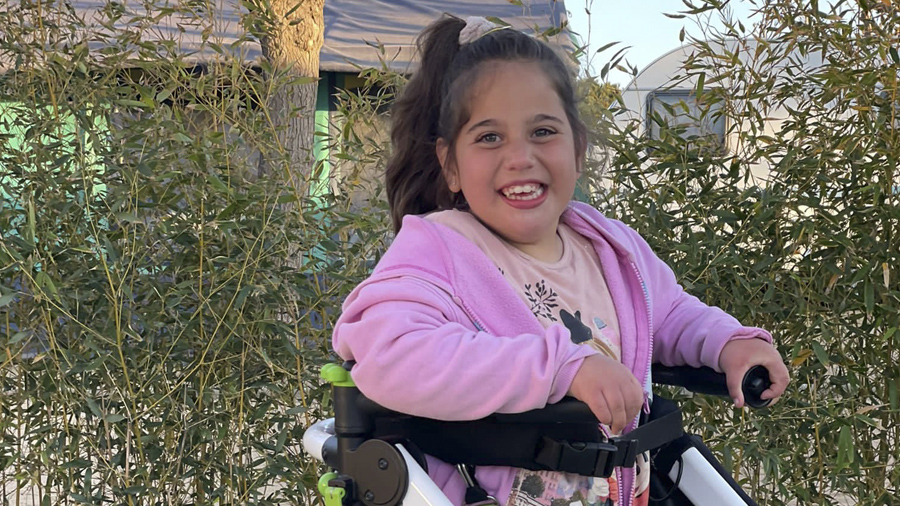La Lucha de Abril has donated €75,000 to the UAB for the gene therapy research being conducted to find a treatment for spastic paraplegia type 52 (SPG52). To date, the crowdfunding campaign created by the association and the UAB has received a total of €353,000 from 1,500 donations. This has allowed researchers to develop a treatment and create animal disease models which are currently being studying. In Granada, the family of Samuel, another child affected by the same rare disease as Abril, has raised €10,000 through their association, which have also been donated to the UAB.

The association La Lucha de Abril was created by the parents of Abril, a girl suffering from this rare disease for which there is no cure, to help raise money needed for research. The amount of money raised was obtained through different solidarity activities and events. Almost half of the amount, €32,000, come from the solidarity race organised in collaboration with the Mossos d'Esquadra police in Badalona this past April. Another association, Corro por Marina y Samuel, also managed to raise €10,000 that will go towards research. The association was created by the family of Samuel, another boy affected by the same SPG52 disease in Spain.
The crowdfunding campaign by La Lucha de Abril and the UAB has received more than 1,500 donations since it was activated three and a half years ago. The total amount of money raised until now equals €353,000, in which the association has donated €275,000.
The research is being carried out by the team of the Gene Therapy for the Central Nervous System group at the UAB, led by Miguel Chillón, ICREA researcher at the Institute of Neurosciences (INc-UAB) and the Vall d'Hebron Research Institute (VHIR), and Assumpció Bosch, professor of Biochemistry and Molecular Biology at the UAB. The study also includes the collaboration of other prestigious institutions, such as IDIBELL and the Germans Trias i Pujol University Hospital, and the La Caixa Foundation.
The research team has already administered the treatment in neurons generated in the lab from Abril's and her mother's stem cells and has generated young and adult SPG52 model mice, which it is monitoring to observe the long-term effect of the therapy. In addition, the team recently administered the treatment in newborn model animals, "to determine whether the therapeutic effect is greater the earlier it is administered", says Miguel Chillón.
SPG52 is a progressive genetic disorder, caused by a mutation in the AP4S1 gene, and there is currently no clinical solution to treat it. Symptoms, which include cognitive deficits, speech and mobility disorders or possible epileptic seizures, appear at a very early age.
The treatment developed by the researchers consists of introducing a functional copy of the AP4S1 gene into the affected cells to replace the mutated gene, using an adeno-associated vector (AAV). The aim is for this treatment to halt the disease or correct its progression.
A girl from Badalona and a boy from Granada, the only two known cases of SPG52 in Spain
In Spain, there are only two known cases of children affected by SPG52. Abril, a seven-year-old girl from Badalona who was diagnosed with the disease when she was three years old and for whom gene therapy research was initiated. Currently, her condition has worsened, especially in terms of her motor skills. The other child, Samuel, an 11-year-old boy from Granada, was diagnosed with the disease only about three years ago.
Samuel and Abril, the two children affected by spastic paraplegia type 52 (SPG52) in Spain.
The associations of the two children suffering from this disease have decided to join forces and carry out more activities to raise money for research and make society aware of their disease and the need for research into gene therapy as a way to treat this and other rare diseases, all of which require enormous economic investment.
The worsening of the disease's effects as the children grow makes it necessary to find a treatment as quickly as possible, although "there is still a long way until we can conduct clinical trials, particularly in terms of obtaining licenses from the Spanish Agency of Medicine and Medical Devices (AEMPS), a process that entails very high added costs", the UAB researcher points out.






